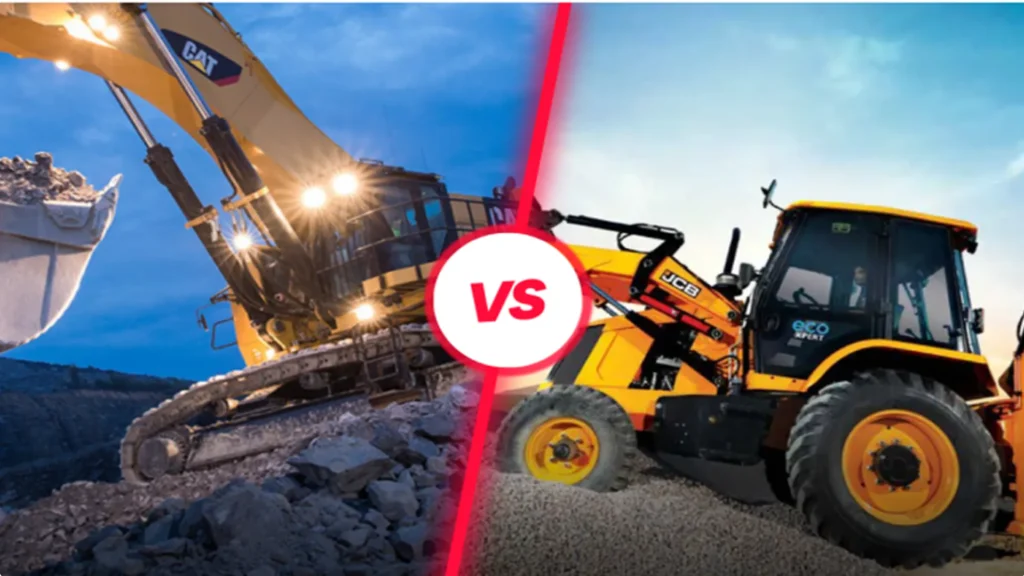Choosing between an excavator and a backhoe loader can be challenging, especially if you’re new to the construction industry. Both machines are essential for earthmoving tasks, but they have different capabilities, applications, and advantages. In this guide, we will compare excavators vs. backhoe loaders to help you determine which one best suits your project needs. 1. Understanding the Basics What is an Excavator? An excavator is a large, heavy-duty machine designed primarily for digging, demolition, and lifting heavy loads. It consists of a boom, stick, and bucket, which are attached to a rotating platform called the house. Excavators operate on tracks or wheels and are commonly used in large-scale construction and mining projects. What is a Backhoe Loader? A backhoe loader is a versatile, mid-sized machine that combines the features of a tractor, loader, and excavator. It has a loader bucket at the front for lifting and a backhoe arm at the rear for digging. Backhoe loaders are commonly used in urban construction, farming, and utility work due to their mobility and multiple functions. 2. Key Differences Between Excavators and Backhoe Loaders Feature Excavator Backhoe Loader Size & Weight Larger and heavier Smaller and more compact Mobility Tracks or wheels; limited mobility on roads Can be driven on roads without additional transport Digging Depth Deeper digging capacity (10-30 feet or more) Shallower digging capacity (8-14 feet) Best for large excavation and demolition tasks Suitable for multiple tasks including digging, loading, and trenching 360° Rotation Full 360-degree rotation for better flexibility Limited rotation (about 200 degrees) Job Site Suitability Ideal for large, open construction sites Perfect for small and medium-sized projects, urban settings Cost Generally more expensive More affordable and cost-effective 3. When to Choose an Excavator You should choose an excavator if: You need to dig deep trenches or foundations for large buildings. Your project involves heavy-duty demolition or mining. The job site is large and requires extensive earthmoving. You need a 360-degree rotating arm for greater flexibility. You’re working on a rough terrain where tracks provide better stability. Best Applications for Excavators: Large-scale construction projects Road and bridge construction Mining and quarrying River dredging Heavy demolition 4. When to Choose a Backhoe Loader You should opt for a backhoe loader if: You need a multi-purpose machine for digging, loading, and lifting. Your job requires moving between different locations quickly. The worksite is in an urban area with space constraints. You are working on a smaller-scale project that doesn’t require deep digging. You have a limited budget and need a cost-effective solution. Best Applications for Backhoe Loaders: Small to medium-sized construction projects Landscaping and agricultural work Digging trenches for utilities Roadside maintenance and repair Snow removal and material handling 5. Cost Considerations Excavators tend to be more expensive, both in purchase price and operating costs. The average cost ranges from $100,000 to $500,000, depending on size and features. Backhoe loaders are more budget-friendly, with prices ranging from $30,000 to $150,000. They also have lower maintenance and fuel costs compared to excavators. 6. Final Decision: Which One Should You Buy? If your project requires heavy-duty digging, demolition, and high productivity, an excavator is the best choice. However, if you need a versatile, mobile, and cost-effective machine for various construction tasks, a backhoe loader will be more suitable. For the best deals on used and new excavators or backhoe loaders, visit HeavyMachineryCare.com and explore a wide range of reliable construction equipment today!










